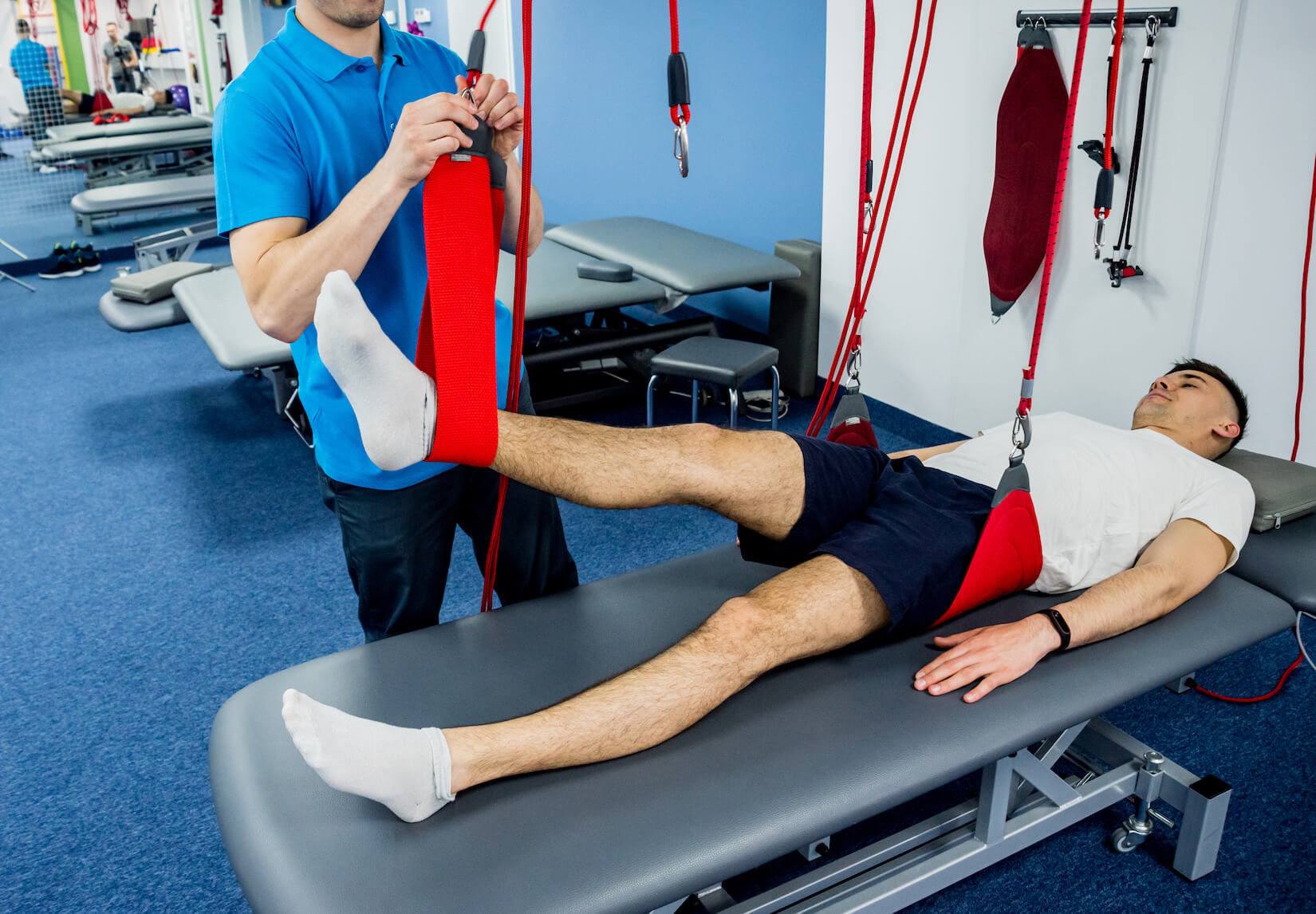When visiting a chiropractor, you may often hear the word “traction” being thrown around when discussing treatment plans. While specific treatment techniques can vary based on your provider’s practice method, traction is commonly used for spinal decompression, alignment, and posture correction amongst thousands of chiropractors worldwide.
Studies show that approximately 67% of patients experience pain relief and improved range of motion after continuous lumbar traction and spinal decompression therapy. Given its impressive results and potential for curing sciatica and nerve compression issues, traction is a valuable tool for chiropractors and patients seeking long-term results. Here, we will explore the processes and benefits of spinal and cervical traction therapy and how modern-day chiropractors use it to its fullest potential.
What Is Traction and How Is It Used?
Traction is a chiropractic technique used to gently stretch the spine and alleviate pressure in between the vertebrae. A mainstay of modern chiropractic care, traction is a therapeutic approach to relieving pain, improving range of motion, and promoting healing within the body. By applying controlled force in various directions to the spine, either manually, mechanically, or through inversion, traction can stretch tight muscles to reduce tension and decompress the spine and joints for optimal movement and pressure relief.
Manual traction utilizes a hands-on approach to spinal decompression. During manual neck or cervical traction, a chiropractor applies pressure with their hands to gently extend the neck upwards, relieving pressure on the spinal nerves. When treating lower back pain through manual traction, the forces will often be focused in the opposite direction, applying downward pressure to the lower back to decompress the spine and reduce pain.
Mechanical traction typically involves using a machine or table to assist with spinal or cervical decompression. Mechanical cervical or lumbar traction typically involves the patient lying on a table. At the same time, a machine, controlled either with light weights or controlled force, slowly stretches the neck and lower back. Mechanical traction can be combined with inversion traction, typically performed by inverting patients and gently applying pressure with another machine to decompress the spine with added gravitational support.
Common Conditions Treated With Traction
Because traction is such a versatile form of chiropractic care, it can treat various spinal issues and conditions. From the simplest adjustments to total spine realignment over time, traction can be adjusted to meet any patient’s needs. Common conditions that use traction are:
Lower back pain: Traction is often effective for relieving pain and improving mobility in the lower back. It gradually stretches the spine and reduces pressure on compressed vertebrae in the lumbar area.
Neck pain: Gradual stretching can help realign the bones in the neck and restore mobility by taking the pressure off them. Traction can also be used to treat subluxation and reduce stiffness following an injury from accidents or whiplash.
Herniated discs: When discs in the back begin to bulge out, traction can help relieve the pressure on these discs and surrounding nerves so that chiropractors can realign and treat the area.
Sciatica: Characterized by pain radiating down the leg, sciatica can be treated through total spinal decompression through traction. By reducing pressure on pinched sciatic nerves, traction brings relief to the area, working in collaboration with tension reduction to minimize pain.
Degenerative disc disease: Regular visits to the chiropractor for traction therapy can minimize constant pressure on the discs between your spinal vertebrae. Over time, this reduced pressure can slow the progression of disc degeneration and alleviate pain.
Incorporating Traction into Your Chiropractic Care Plan
After testing, diagnostics, and a thorough medical history review, your chiropractor should develop a customized treatment plan tailored to your lifestyle and individual needs. By assessing your condition and symptoms, chiropractors can determine which forms of therapy you are best suited for alongside traditional chiropractic adjustments and manipulations.
If your chiropractor determines that you are a good candidate for chiropractic traction, it will be used alongside a few other treatment modalities, such as manual adjustments, therapeutic exercise and stretching, or heat, ice, and electrical therapy. By combining various treatment options, chiropractors can create a personalized treatment plan that addresses the root causes of pain and promotes long-term healing.
Reasons Why Traction May Not Be Used in Your Treatment Plan
As a non-invasive and generally safe approach to enhancing chiropractic adjustments and spinal manipulations, traction is an extremely common form of therapy used by chiropractors. Although traction has become a mainstream staple in chiropractic care, there are many reasons why some people might not be good candidates for receiving this type of treatment. Before starting treatment, qualified chiropractors will evaluate your medical history and previous injuries and determine whether or not traction is a safe option for you. People with these conditions are often not good candidates for traction therapy, as it can worsen or exacerbate current or underlying symptoms:
Recent fractures: If you have recently fractured a bone in your neck or spine, traction therapy may not be a good option due to the fragility of broken bones. The decompressing nature of traction may not allow your bones to heal and strengthen properly.
Osteoporosis: Similar to fractures, weakened bone structure from osteoporosis can pose major risks to spinal health. Traction therapy can cause weakened bones to fracture, affecting overall stability and causing more pain.
Certain neurological or neuropathic conditions: Sensitive nerve pathways and endings in those with neurological or neuropathic conditions can be risky when considering traction. Decompressions or stretching can be triggering to those with sensitive nerve conditions, making it an inadvisable form of treatment.
Find Expert Chiropractic Care with Denver Integrated Spine Center
Traction is a valuable tool in chiropractic treatment that provides a noninvasive and holistic opportunity to advance traditional treatment options. While traction is a great asset to comprehensive care, it is not for everyone. A qualified and experienced chiropractor will help you determine if traction is right for you and develop alternative treatment plans that address your specific needs.
At Denver Integrated Spine Center, our team of experienced chiropractors work to develop personalized treatment plans that meet your needs. As Denver, Colorado’s premier multidisciplinary injury recovery and rehabilitation center, our chiropractors utilize tailored and research-based techniques to bring you back to a pain-free and active life. Schedule an appointment with us online for any of our three locations, or call us at (303) 758-9000 to learn more about our chiropractic offerings today.
Denver Integrated Spine Center has the best chiropractors in Denver and Lakewood. The city’s premier multidisciplinary injury recovery and rehabilitation center. If you’re experiencing chronic back pain, shoulder pain, limited mobility, headaches or neck pain, weakness in your hands, or any other common injuries affecting your musculoskeletal structure, our experienced team of local chiropractors, massage therapists, and medical professionals can help.


